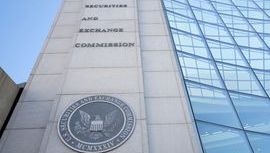ESG: Changing the landscape of investing
By Daniel Johnson; Jacqueline Swanepoel, SS&C
Published: 20 September 2021
The future of finance is rapidly changing with the proliferation of environmental, social and governance (ESG) investing. This rise has led to an increase in demand by investors for greater transparency and new regulatory reporting requirements in every jurisdiction. We see global regulatory bodies and governments demonstrate their commitment to generating more sustainable investment opportunities. As a result, they share ESG disclosures, new standards, and action plans for financing sustainable growth with increasing frequency.
ESG factors present both risks and opportunities and, with it, an explosion in ESG data. Bottom line: staying on top of it all can be a daunting prospect.
In the beginning
Responsible investing, the precursor to ESG investing, can be traced back to the 18th and 19th Centuries and faith-based organisations, which initially avoided investments that weren’t socially responsible. This practice widened with socially responsible investing in the 1960s and 1970s by university endowments.
In 2000, the involvement of global institutions began with the publication of the UN Millennium Development Goals aimed at tackling poverty. These goals were replaced in 2012 by the 17 UN Sustainable Development goals, seeking to address environmental, political and economic challenges by 2030. Then the 2015 Paris Agreement followed, focusing on reducing greenhouse gas (GHG) emissions.
More recently, the G20 Task Force for Climate-Related Disclosures (TCFD) wants more companies to manage and report climate-related risks and opportunities. As a result, investors are now paying greater attention to companies' direct, indirect and supply chain GHG emissions.
Why it matters to investors
In 2004 the United Nations global compact published the whitepaper Who Cares Wins and was the first to use ESG. The call to action led to the 2006 UN Principles for Responsible Investing (UN PRI), which now has over 3,000 signatories managing more than US$3 trillion in assets. With so much money controlled by responsible investors, it's not surprising they expect more from asset managers.
The new scrutiny for asset managers includes due diligence questionnaires on investor practices, mandates tied to exclusion lists and exposure monitoring, and ESG transparency reporting of trend analysis and risk profiles. Additionally, with the rise of social media, more and more companies are under increased media and investor scrutiny.
ESG regulation
The introduction of financial market regulations was inevitable. The Sustainable Finance Disclosure Regulation (SFDR) requires financial market participants in the European Union (EU) or EU investors or EU funds to consider 14 mandatory Principal Adverse Indicators, with another 46 optional indicators. These include GHG emissions, biodiversity, water, waste and social and employee matters, with reporting commencing in 2022. In addition, TCFD- elated regulations may follow soon, requiring more prescriptive reporting by companies in certain countries.
Inconsistent standards: the reporting challenge
Between investors and regulators, asset managers are under increasing pressure to explain how they integrate ESG factors into their decision-making processes, and the metrics used to monitor ESG and manage risks within their portfolios. While the regulatory framework around ESG is still taking shape, asset managers should prepare for the likely evolution from voluntary to some form of mandatory ESG reporting soon.
The challenge for asset managers is the lack of standards for defining, measuring and reporting on ESG. Crunching ESG data on companies has become an industry unto itself, with more than 100 vendors providing ESG scoring, rating and reporting services. Their methodologies vary widely. Many of these rating firms rely primarily on self-reported information via companies’ disclosures in their annual and quarterly reports. In the digital age, however, no company is fully in control of its own story anymore. This has given rise to data providers using artificial intelligence to track market sentiment on companies based on news coverage, regulatory actions and social media commentary – scoring companies on their 'real' rather than self-reported ESG behaviour.
Not surprisingly, this disparity of rating methods leads to a disparity of results. Different vendors’ scores for a single company can be all over the map. It’s important for asset managers to understand exactly how a vendor arrives at its scores or ratings and the underlying data sources used. It still falls to the fund manager to make informed judgments based on information from disparate sources, and to be able to communicate its ESG policies and practices to clients.
Data to the rescue?
There are over 100 data vendors supplying the market with ESG scores, ratings and reports on companies based on company disclosures and independent research. ESG data is still in the early stages of development and this can lead to ESG data vendors reaching different ratings when looking at the same company. It’s therefore important to understand exactly how an ESG vendor calculates their ratings and the source data driving the ratings. This will then help end-users to understand unexpected results, such as the March 2021 investor report that listed a tobacco company and a mining/commodity trading company as being in the top five ESG rated companies in the UK FTSE 100.
How can we help?
To discuss any of the points raised in this article or find out how SS&C can help you, please contact [email protected]







